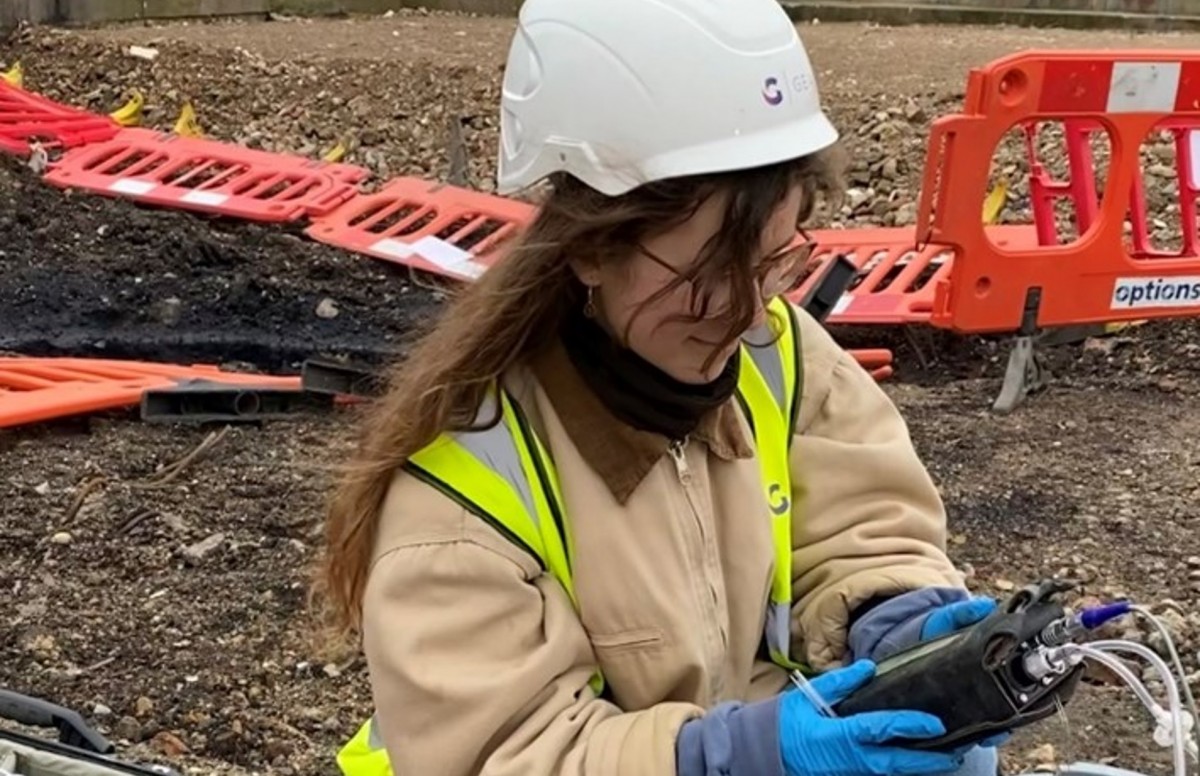Geotheta Fundamentals Explained
Geotheta Fundamentals Explained
Blog Article
Things about Geotheta
Table of ContentsGeotheta for BeginnersGetting My Geotheta To Work9 Simple Techniques For GeothetaThe Best Guide To GeothetaA Biased View of Geotheta

They conduct website examinations, collect samples, do research laboratory tests, and analyze data to evaluate the viability of the ground for construction jobs - Consulting Engineer. Based on their searchings for, geotechnical designers provide recommendations for structure style, incline security, keeping frameworks, and reduction of geotechnical threats. They team up with other experts, such as engineers, structural designers, and construction teams, to ensure that geotechnical factors to consider are integrated into the general job layout and implementation
By evaluating the habits and residential properties of soil and rock, they can determine possible geotechnical risks such as landslides, dirt settlement, or incline instability. Their proficiency assists stop failures or mishaps that can threaten lives and property. Here are some thorough tasks and obligations of a geotechnical engineer: Site Examination: Geotechnical designers conduct website investigations to gather data on subsurface conditions.
They interpret the data to understand the homes and behavior of the dirt and rock, including their stamina, leaks in the structure, compaction qualities, and groundwater conditions. Geotechnical Evaluation and Style: Geotechnical designers evaluate the data gathered throughout website investigations to examine the security and viability of the website for building projects. They perform geotechnical calculations and modeling to assess variables such as bearing ability, settlement, slope stability, side planet stress, and groundwater flow.
The Buzz on Geotheta
Structure Style: Geotechnical designers play a critical role in making structures that can safely sustain the intended framework. They assess the soil conditions and tons demands to figure out the appropriate foundation type, such as superficial foundations (e.g., grounds), deep foundations (e.g (https://moz.com/community/q/user/geotheta?_gl=1*xkyvtd*_up*MQ..*_ga*NjU0Mjk2NzIxLjE3MjI2MDU1Nzc.*_ga_DS7K9Q3S5W*MTcyMjYwNTU3Ni4xLjAuMTcyMjYwNTU3Ni4wLjAuMA..)., piles), or specialized methods like soil renovation. They take into consideration variables such as settlement limitations, bearing capacity, and soil-structure interaction to develop optimal structure styles
They review construction strategies, display website tasks, and conduct area evaluations to verify that the layout referrals are complied with. If unpredicted geotechnical problems emerge, they analyze the scenario and give suggestions for removal or adjustments to the style. Danger Analysis and Reduction: Geotechnical designers evaluate geotechnical threats and threats connected with the job site, such as landslides, liquefaction, or dirt disintegration.

Cooperation and Interaction: Geotechnical engineers function carefully with various other experts associated with a project, such as architects, structural designers, and construction groups. Effective interaction and partnership are vital to integrate geotechnical factors to consider into the overall task design and building and construction process. Geotechnical designers give technical experience, solution inquiries, and guarantee that geotechnical requirements are met.
Top Guidelines Of Geotheta
Here are some sorts of geotechnical designers: Foundation Engineer: Structure engineers specialize in developing and examining structures for frameworks. They analyze the dirt problems, tons demands, and site qualities to figure out one of the most suitable structure kind and design, such as shallow foundations, deep structures, or specialized techniques like stack structures.
They assess the factors influencing slope stability, such as soil homes, groundwater problems, and slope geometry, and develop techniques to avoid incline failures and reduce dangers. Earthquake Designer: Quake designers specialize Continue in assessing and creating frameworks to withstand seismic forces. They evaluate the seismic threat of a site, evaluate dirt liquefaction potential, and create seismic design standards to make certain the safety and durability of structures throughout earthquakes.
They perform field screening, collect samples, and evaluate the collected information to identify the dirt residential properties, geologic formations, and groundwater conditions at a website. Geotechnical Instrumentation Designer: Geotechnical instrumentation engineers focus on monitoring and gauging the actions of dirt, rock, and structures. They install and maintain instrumentation systems that monitor variables such as soil negotiation, groundwater levels, incline movements, and architectural variations to evaluate performance and supply early warnings of prospective concerns.
About Geotheta
They carry out tests such as triaxial examinations, loan consolidation tests, direct shear examinations, and permeability tests to collect information for geotechnical analysis and style. Geosynthetics Designer: Geosynthetics engineers focus on the design and application of geosynthetic materials, such as geotextiles, geogrids, and geomembranes. They use these materials to boost soil security, enhance slopes, supply water drainage services, and control disintegration.
They have a tendency to be investigatory people, which implies they're intellectual, reflective, and analytical. They are curious, methodical, sensible, logical, and sensible. Some of them are also social, indicating they're kind, charitable, cooperative, client, caring, helpful, compassionate, skillful, and pleasant. Does this seem like you? Take our totally free occupation examination to locate out if geotechnical engineer is one of your top occupation suits.
In the office setting, geotechnical designers utilize specialized software program devices to execute computations, develop styles, and evaluate data. They prepare records, testimonial job requirements, connect with customers and staff member, and coordinate project activities. The office setting provides a conducive environment for study, analysis, and collaboration with various other experts associated with the task.
Not known Facts About Geotheta
They frequently see job sites to carry out website examinations, examine geotechnical conditions, and collect information for analysis. These sees include traveling to different places, in some cases in remote or tough surfaces. Geotechnical engineers might perform soil sampling, conduct examinations, and screen building and construction activities to guarantee that the geotechnical facets of the job are being applied correctly.
Geotechnical engineers likewise operate in specialized geotechnical research laboratories. In these facilities, they conduct experiments, do examinations on dirt and rock samples, and examine the engineering residential or commercial properties of the products. Geotechnical lab designers function thoroughly in these atmospheres, taking care of testing tools, operating tools, and tape-recording information. They work together with other lab team to guarantee precise and reliable testing results.
Report this page